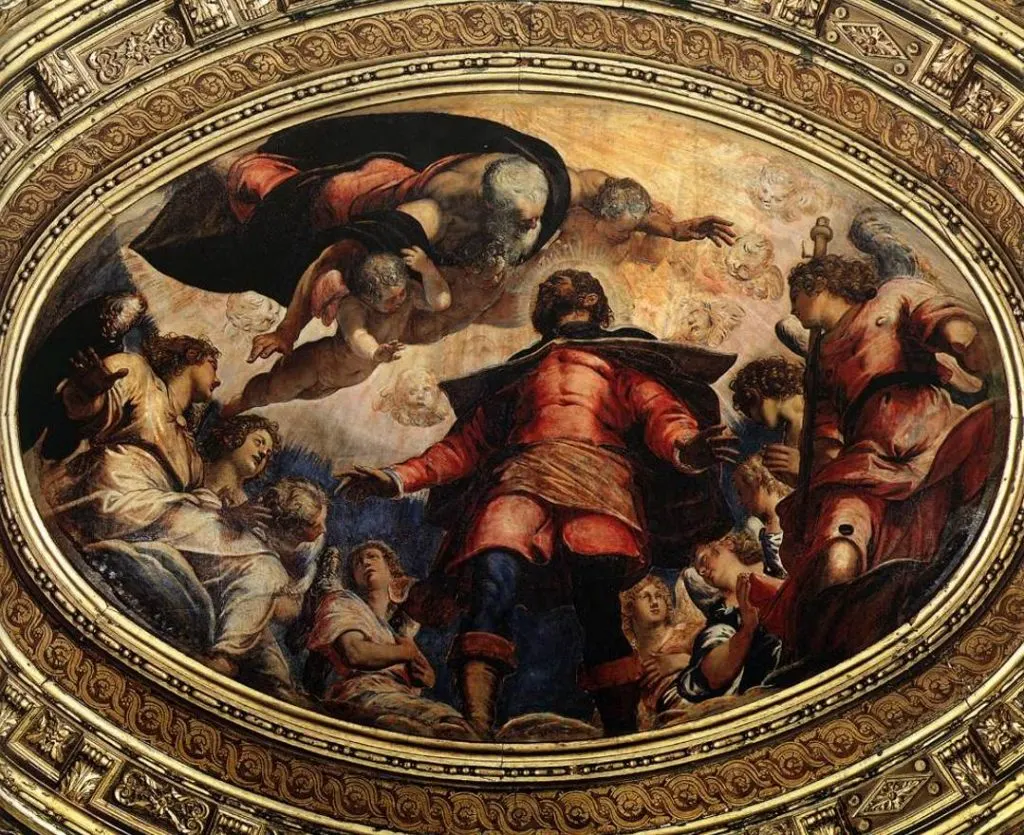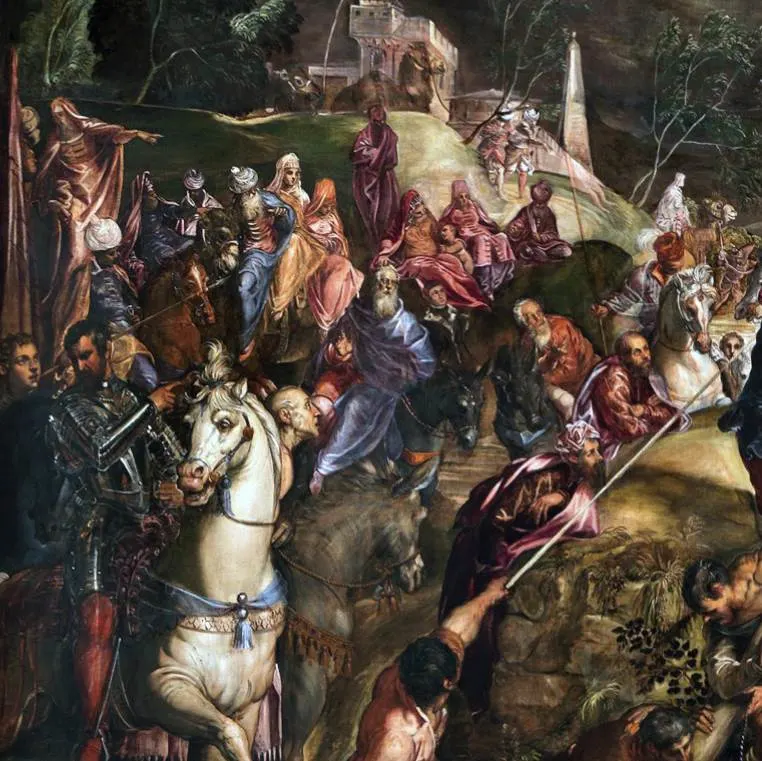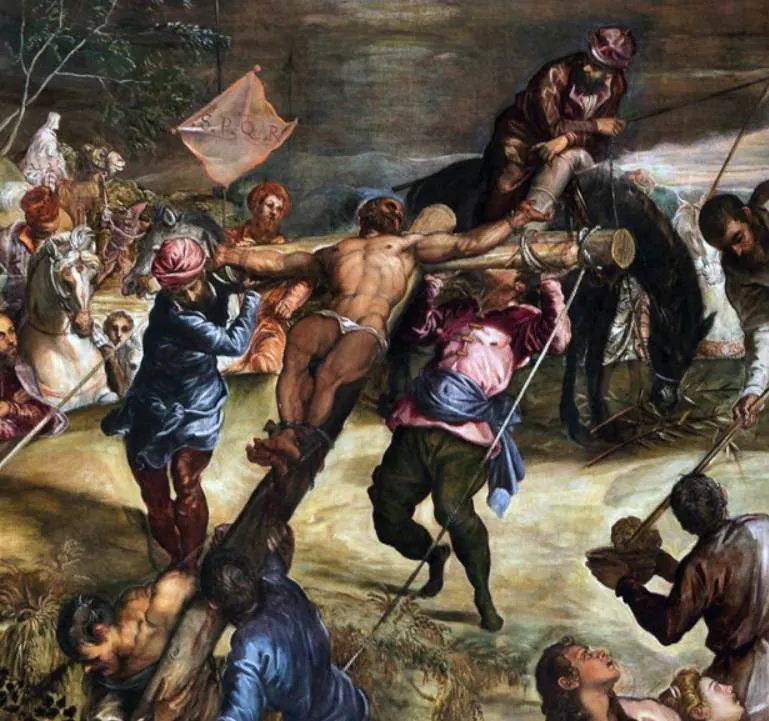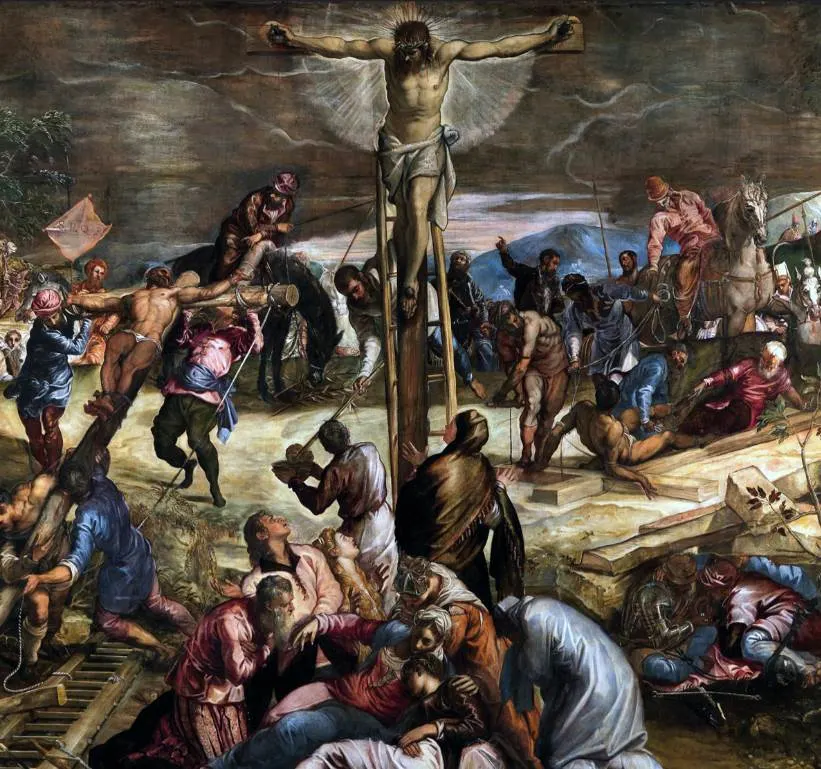Monumental works of art in the typical Late Renaissance style of the 16th century that could be produced in record time.
This was the trademark of a Venetian Mannerist artist named Jacopo Robusti (1518-1594), nicknamed “Il Furioso” (based on his work ethic) or “Tintoretto” (his childhood nickname).
Let’s take a closer look at some of the most interesting facts about Crucifixion by Tintoretto, one of the works in the artist’s oeuvre that defines his entire career.
1. The painting was completed in the 1560s
Tintoretto was born and raised in Venice, the remarkable capital of the Veneto region in the northeast of Italy. His father was a dyer or “Tintore” which is how he got his nickname as a child.
The famous Italian artist is believed to have learned the trade of painting on his own, although it’s assumed he was briefly trained by Titian (1490-1576), the other renowned Renaissance artist and Venetian master of the 16th century.
To make a living, he hustled to earn commissions, often producing paintings for free to please potential patrons. This strategy worked.
In combination with the incredible pace that he was able to produce paintings, he managed to produce more paintings than any other Venetian artist in the 16th century.
He completed Crucifixion in 1565, a date we can be sure of because the painting was both signed and dated.

2. It was commissioned by a confraternity consisting of wealthy Venetians
The painting was commissioned to decorate the main seat of the “Confraternity of San Rocco,” a Christian association that was established to protect the city from the plague. Venice is a lagoon city and plagues were a common occurrence.

This confraternity was established in 1478 and was named after a 14th century Chrisitan saint named San Rocco (1295-1327) or “Saint Roch.” He is associated with fighting the plague for which he was chosen by the group.
The group consisted of wealthy Venetian individuals who became patrons of the arts in the city. They commissioned this work from Tintoretto to decorate the Scuola Grande di San Rocco, a magnificent Renaissance building that was constructed in multiple phases between 1515 and 1560.

3. He completed over 50 paintings for this confraternity in two periods
The confraternity built its headquarters right next to the church of San Rocco, a structure that was completed between 1489 and 150, less than a decade before work on the Scuola Grande di San Rocco began.
Being a hustler, it was only logical that the ambitious painter did everything he could to earn commissions from this confraternity. His marketing campaign started by doing free paintings while he was only asked to produce a preparatory drawing.
The subject of this work was “San Rocco received into Heaven” and the painting was deemed so good that it was placed in position in an oval inside the building. It’s named “The Apotheosis of St Roch” and has dimensions of 240 x 360 centimeters (94.4 x 141.73 inches).
Tintoretto earned about 50 commissions from this fraternity, including Crucifixion for which he was paid the handsome fee of 250 ducats.

4. It’s one of the most remarkable crucifixion scenes in the world of art
The artist didn’t merely paint Christ on the cross and perhaps a couple of onlookers. Tintoretto produced an immense work of art that gives us a complete overview of Calvary Hill, the location just outside of Jerusalem that is the assumed location of Jesus’ execution.
We can see soldiers, executioners, onlookers, horsemen, traders, and apostles who make up the entire composition of this monumental work of art.
The almost frantic activity in every part of the painting makes this one of the most extraordinary crucifixion scenes of the 16th century, and arguably one of the most fascinating ever painted as well.

5. It features one of the artist’s trademarks inspired by a Renaissance master
It’s no secret that Tintoretto was an admirer of both his contemporary Titian and one of the greatest artists in history, Michelangelo. He was influenced by the works of Michelangelo because Tintoretto often painted muscular figures.
This was one of the ultimate trademarks of Michelangelo, exemplified in some of his most famous works such as “The Creation of Adam” and “The Last Judgement.”
Apart from the overly muscular body of Jesus, he also included the two thieves who were nailed to the cross next to Jesus that day. Especially the thief on the left, of whom the cross is being raised, resembles the muscular figures often painted b Michelangelo.

6. The painting revolves around a pyramidal composition in the center
The inclusion of the two thieves next to the cross of Jesus Christ allowed the artist to make the painting much bigger than most paintings depicting the same subject.
Despite being an extremely hectic scene, the overall composition looks remarkably balanced. Tintoretto used a trick to achieve this.
First of all, he positioned Jesus Christ much higher than he should be. He then added a group of people at the foot of the cross which takes on a pyramidal composition. This allows the almost feverish figures on both sides to revolve around this central element.

7. How big is Crucifixion by Tintoretto?
Tintoretto didn’t mess around when it came to the size of the paintings he produced. Because his presentation work with the subject S. Rocco received into Heaven. was several meters in diameter, this is no surprise.
He painted extremely fast and was able to paint in a matter of weeks what took other artists several years, and this is no exaggeration.
Crucifixion by Tintoretto was commissioned to decorate an entire wall at the Scuola Grande di San Rocco and has dimensions of 536 × 1127 centimeters (211 × 444 inches).
8. Where is the painting located today?
Most Tintoretto paintings never left the place that they er originally hung, this for the simple fact that they are too big to be moved. Think about the artist’s “Il Paradiso” (1594) at the Doges Palace, the largest panel painting ever created.
This painting also never left its original location as it still hangs in the Sala dell’Albergo of the Scuola Grande di San Rocco, Venice, Italy.

